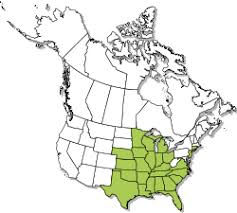Rattlesnake Master
Common Name: Rattlesnake Master.
Scientific Name: Eryngium Yuccifolium.
What to look for? The Rattlesnake Master is a unique plant—upon your first encounter, you will find it to be startlingly different than most other native plant forms. A whitish green globe-like flowerhead sitting atop a moderately tall stem. The Rattlesnake Master has a tall, stout central stem. There are alternate leaves, but only near the base of the plant. The entire plant is a bluish or grayish green. At the apex of the central stem is a long-stalked inflorescence, which consists of several prickly balls of flowers. These whitish green balls contain numerous small white flowers that are individually surrounded by prickly bracts. Each ball of flowers is enfolded by a star-like rosette of small leaves. The flower heads turn purplish in the fall.
Where can they be found at Carillon Stonegate Pond? There are Rattlesnake Masters growing at the restored prairie at Stonegate Park.
How big are they? The Rattlesnake Master may grow up to five (5) feet tall. The oval leaves are approximately 2 ½ inches long and two (2) inches across. The prickly balls of flowers are approximately one (1) in diameter.
Where do they grow and thrive? Rattlesnake Master is found across central and eastern Illinois. Across the U.S., Rattlesnake Master ranges from the Great Plains east and up into Canada. The Rattlesnake Master habitats include prairies – such as the restored prairie at Stonegate Park, thickets, savannas, and limestone glades.
When do they bloom? The blooming period occurs from July into August, and the balls of flowers remain attractive for about 2 months. The root system consists of a central taproot. After blooming, a plant will gradually die down. But one or more offsets will develop at its base forming a small clump of Rattlesnake Master plants.
Do birds, insects or other wildlife associate with this plant? The nectar from the flowering heads attract many kinds of insects, including bees, wasps, flies, Monarch and other butterflies, skippers, moths, and beetles. The coarse foliage and prickly balls of flowers keep grazers and nibbles away.
Interesting Facts About the Rattlesnake Master:
-
The name “rattlesnake master” results from the lore that the plant’s sap is a preventative to snakebite – which it is not.
-
This distinctive plant is gaining popularity as an ornamental.
-
The plants have a large root stock, an adaptation that allows for water storage during summer droughts that are frequent occurrences on the open prairie.
-
The Rattlesnake Master is a very odd member of the Carrot family in that it resembles a yucca or some other desert plant.
For more information on the Rattlesnake Master and sources of information used in this blog (these are several of the sources that I am using to learn as I blog), please visit Illinois Wildflowers, Minnesota Wildflowers, Missouri Botanical Garden, and Friends of the Wildflower Garden.
The Carillon at Stonegate community is very fortunate to have a variety of wetland, forest and prairie environments conducive to a variety of birds and other wildlife, insects and plants. Our community and the Kane County Forest Preserve do an exceptional job in maintaining this natural environment – both for the benefit of the birds and wildlife and for our residents to enjoy.
Take a hike and see what you can find – and identify!




